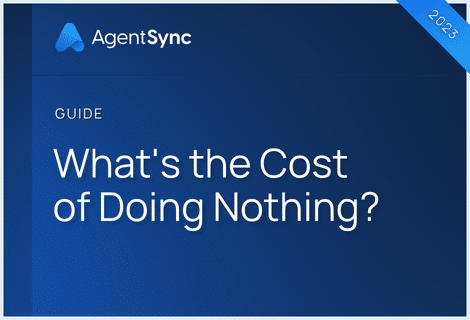

Imagine a world where insurance services like claims processing, customer service, and data management are all automated, scalable, and secure from cyber threats. This world isn’t a dream, it’s a future reality – and one that’s actually not that far away!
A recent study by McKinsey & Company analyzed the top 10 tech trends currently (or soon to be) transforming the insurance industry. Of these, they identified five that would have the most profound impact on the products and services insurance carriers, agencies, and MGAs/MGUs provide their customers.
We’ve created a deeper dive into these five tech trend areas here, but if you’re looking for a faster read, we’ve decided to focus one quick blog on each of these top five areas of technology that are considered the industry game-changers of the future.
What is cloud-native infrastructure?
We’re not talking about that gray fluffy wisp above your head. “The cloud” is now where most of our information lives, both when we’re actively using it and when we’re not.
Cloud computing has revolutionized the way people store and share data online. If you’ve ever collaborated with a team on a shared document, then you’ve benefited from cloud computing and cloud-native infrastructure. The big difference between the servers of yesteryear and today’s cloud is where and how the information is stored. Instead of a large, physical computer (or set of computers) residing “on premises” in a particular location, cloud storage is a distributed model of storing data that allows us to access it from anywhere.
Cloud computing has also brought about the idea of Software as a Service (SaaS), which allows software companies to sell access to their web applications and cloud data, rather than literal ownership of a physical or digital product.
What does cloud-native infrastructure mean for the future of insurance?
Insurance carriers, agencies, and MGAs/MGUs of the past relied on technological tools and applications just like they do today. The difference was, they had to purchase the applications for a large one-time fee and then maintain their own data on servers, either in-house or by paying a third party.
While this was great for the insurance industry of the 1990s, this model didn’t age well. Today, most of the world runs on cloud-native infrastructure. After all, when’s the last time you bought a computer program, 2008, maybe? Instead, today’s consumers pay for subscriptions to everything from their music library to their bookkeeping and productivity software.
For insurance carriers, agencies, and MGAs/MGUs that have adopted cloud-native infrastructure, life is pretty good! They are no longer bogged down by long-forgotten programming languages, obsolete processes, and antiquated mainframes. Cloud-based programs give each member of the distribution channel the opportunity to connect and integrate in real-time. Another advantage of cloud-native infrastructure is the software developers are constantly making updates, and every person and company who continues to pay benefits from the ongoing advancements.
Examples of cloud-native infrastructure in the insurance industry
- Modern agency management systems are based in the cloud
- Cloud-based data enables communication and data sharing between different technology tools, for example between an agency management system and a CRM or HRIS
- Producer licensing and compliance management systems (at least the good ones!) leverage data stored in the cloud to constantly monitor changes in statuses from many different sources
Evolve or be left behind
The bottom line is the future is here, or nearly here. Many of these technologies exist today, and are being heavily utilized in other industries while insurance as a whole continues to lag.
If you’re curious about the other trends we’ve covered, make sure to download our tech trends white paper, or check out our blogs on AI, connectivity advancements, zero-trust architecture, and virtualization in the insurance industry.
Despite the fact that the insurance industry has jumped about five years ahead thanks to the COVID-19 pandemic and being forced to adopt new digital practices, it’s still trailing behind others.
This means opportunity is great for those members of the insurance distribution channel who dive into these emerging technologies sooner rather than later. Insurtechs are launching and growing faster than ever, taking market share from legacy insurance industry players.
This is good news for insurance carriers, agencies, brokerages, and MGAs/MGUs that make a point of keeping abreast of technological advances. One area each of these industry distribution channel partners can already leverage a major tech advantage is within the realm of producer licensing compliance. AgentSync provides a modern, tech-forward user experience that will delight everyone from individual producers, to agency owners, to insurance carrier legal teams.
Want to see AgentSync in action? Watch our on-demand demo right now.

